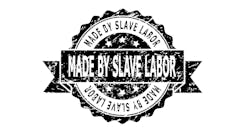The Office of Federal Contract Compliance Programs (OFCCP) of the Department of Labor announced that government contractors’ and first-tier subcontractors’ confidential pay data contained in their EEO-1 (Component 1) Reports submitted to OFCCP from 2016 to 2020 will be revealed publicly soon unless the companies act quickly.
The action stems from a Freedom of Information Act (FOIA) request that was filed by a reporter for a public nonprofit journalistic organization. OFFCP has requested that federal contractors whose information would otherwise be subject to this request submit in writing to the OFCCP by Sept. 19, 2022, any objections they may have to their data being revealed publicly.
The OFCCP has estimated that approximately 15,000 unique covered contractors may be in a position of finding their information exposed, requiring the notice it has provided.
“While some companies have chosen to voluntarily disclose aspects of their EEO-1 Reports, others have carefully guarded the confidentiality of this data,” note attorneys Annette Tyman, Christy Kiely and Michelle Mellinger of the Seyfarth Shaw law firm. But this isn’t the only problem, they emphasize.
The practical reality is that the reporter’s FOIA request may encompass a potentially large number of businesses that are not really covered contractors. Employers sometimes misidentify as federal contractors in their EEO-1 filings. Sometimes all entities of a corporate family are identified as federal contractors in the EEO-1 data if any of them are covered (even if some affiliates are not covered contractors). The OFCCP also may erroneously identify companies as covered contractors or subcontractors, when they are not.
EEO-1 Reports must be filed annually by all employers with 100 or more employees, and by
OFCCP-covered federal contractors and first-tier subcontractors with 50 or more employees. In addition, there are several types of EEO-1 Reports, depending on the organizational structure of the reporting entity.
The FOIA request only seeks what are called “Type 2” Reports. These are the Consolidated Reports that are required of multi-establishment employers. The reports include aggregated data for all employees of the company—at headquarters as well as all establishments—categorized by race/ethnicity, sex and job category.
To make matters even more confusing, the Equal Economic Opportunity Commission (EEOC), which created the form to apply to private employers for its own regulatory purposes, is bound by statutory confidentiality and cannot make its compliance survey data public. In fact, the EEOC has held that such data will only be released to a litigant who has filed a lawsuit, the attorneys point out.
Confidentiality Compromised
OFCCP regulations state that EEO-1 Reports “filed pursuant to this section shall be used only in connection with the administration of the Civil Rights Act of 1964, or in furtherance of the purposes of the order and said Act.” The OFCCP takes the position based on a 1974 federal court case to determine that it is not bound by the EEOC’s confidentiality prohibitions.
FOIA is a federal law that provides for public access to information provided to the government upon request, the attorneys explain. FOIA has several delineated exemptions that can be invoked on a case-by-case basis. The most common objection to the release of EEO-1 data is FOIA’s “Exemption 4,” which protects the disclosure of “trade secrets and commercial or financial information” that is considered privileged or confidential, the attorneys explained.
The OFCCP said that any written objection filed with it by employers seeking to stop public revelation of their data must include at minimum the following:
• The contractor’s name, address and contact information.
• The specific information in the EEO-1 Report considered to be a trade secret or commercial or financial information.
• Facts to establish the data as commercial or financial in nature.
• Whether the information is customarily kept private or closely held, the steps taken to protect its confidentiality, and to whom it has been disclosed.
• Whether the company believes the government has provided an express or implied assurance of confidentiality or, to the contrary, whether at submission it was implied that the government would disclose the information.
• How disclosure of the information would harm the interest of the contractor (e.g., harm to economic or business interests).
The OFCCP will evaluate the objections in light of its regulations and other laws, and provide notice of its decision whether to disclose the information, the Seyfarth Shaw attorneys said. A company that fails to respond by Sept. 19 (without obtaining an extension, that is) “will be considered to have no objection to the disclosure of the information” according to the OFCCP.
If a company wants to file an objection but cannot do so within the commenting period, it should request an extension from the OFCCP as soon as possible. Extension requests are considered on a case-by-case basis. If enough contractors seek extensions, the agency could find that it is not providing an inherently “reasonable period” and extend the objection period for all contractors, the attorneys note.
The Future of EEO-1
All of the previous discussion pertains exclusively to the EEO-1 Component 1 form. A proposed Component 2 Form, designed to force employers of 50 or more employees to submit a massive amount of additional and much more detailed wage data, has had a long and tangled legal history stretching back to the Obama administration.
Under President Biden, the EEOC has committed to implementing a new version of Component 2 which has been intended to match the design of the same revisions that were embraced in the Obama era.
As was the case in the past, the new form requires employers to enter data across more than a dozen job categories and wage levels, categorized by race, ethnicity and sexual orientation (which now includes transgender employees).
Why did EEOC decide to add so massively to employers’ reporting burdens? The commission explains: “The lack of access to pay data absent a specific charge of discrimination has been a longstanding barrier in the agency’s efforts to enforce federal laws prohibiting pay discrimination.”
The commission had already begun to collect some of that Component 2 data when the Trump administration halted the program in 2017. EEOC chose the National Academies of Science (NAS) to review the pay data it already had gathered from employers and the results were unveiled at the end of July. Unfortunately for the EEOC, it turned out that things did not go as well as it had hoped.
The researchers reported that the data gathered during the period the form was in effect in the Obama era “are unsuitable for direct determinations of bias or reasonable cause for enforcement purposes.” The NAS report found that the process of collection, as well as the actual data to be collected, was riddled with widespread flaws.
For example, the collected Component 2 data do not include measures of legitimate causes of pay differences, such as educational attainment and job experience, NAS pointed out. “Such information would assist both EEOC enforcement efforts and employers’ self-assessments,” the researchers said. “Employers’ self-assessments could contribute to improved employment equity.”
The NAS researchers stressed that both short-term and longer-term improvements are needed to address significant concerns in employer coverage and data collection protocols. The report also recommends that EEOC embark in a trial to field test the process before it decides to roll out a nationwide data collection tool based on Component 2 in its present shape.




